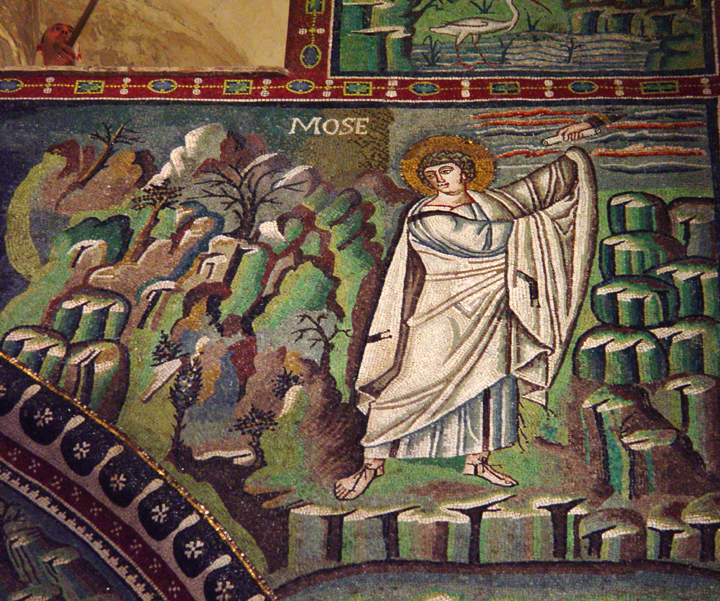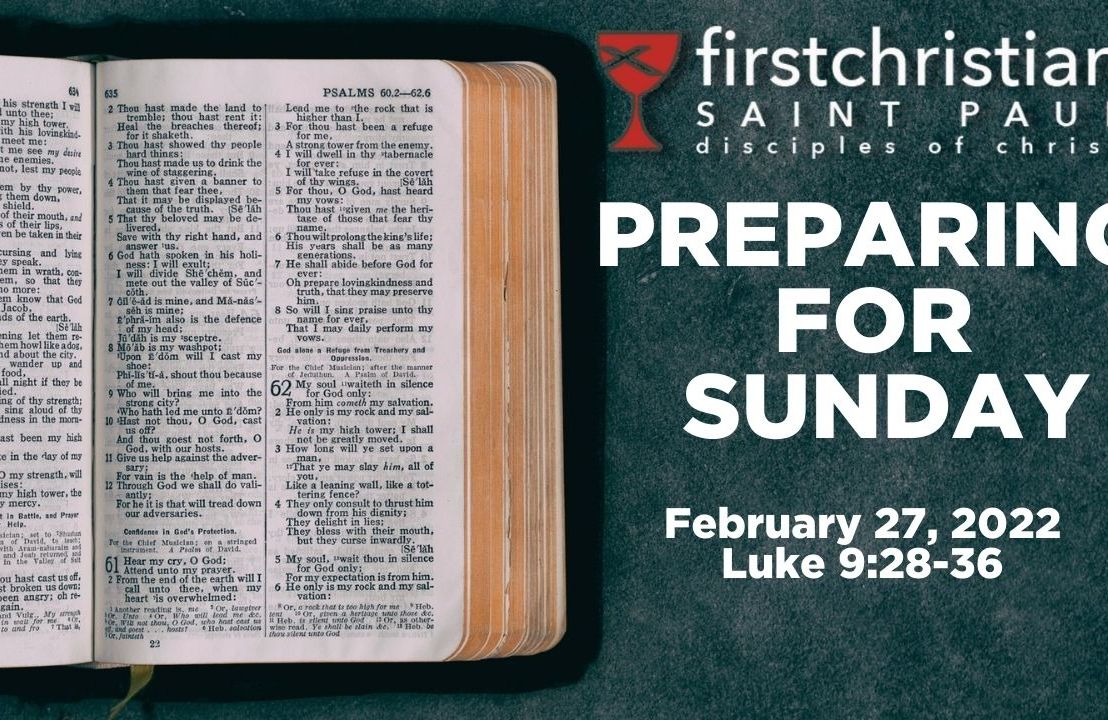
29 Moses came down from Mount Sinai. As he came down from the mountain with the two tablets of the covenant in his hand, Moses did not know that the skin of his face shone because he had been talking with God. 30 When Aaron and all the Israelites saw Moses, the skin of his face was shining, and they were afraid to come near him. 31 But Moses called to them; and Aaron and all the leaders of the congregation returned to him, and Moses spoke with them. 32 Afterward all the Israelites came near, and he gave them in commandment all that the Lord had spoken with him on Mount Sinai. 33 When Moses had finished speaking with them, he put a veil on his face; 34 but whenever Moses went in before the Lord to speak with him, he would take the veil off, until he came out; and when he came out, and told the Israelites what he had been commanded, 35 the Israelites would see the face of Moses, that the skin of his face was shining; and Moses would put the veil on his face again, until he went in to speak with him.
**********************
It is Transfiguration Sunday, which is a day that calls us to reflect on Jesus’ ascent to the top of the mountain, taking with him Peter, James, and John. When the group arrives on the mountain top, Jesus meets with Moses and Elijah, whom many assume represent the Law and the Prophets. As the conversation continues, Jesus begins to glow, the divine radiance shining forth. As they watch this scene unfold, Jesus’ companions are overwhelmed by what they see. You might say that they are in awe of what they see. Not knowing what else to do, they ask Jesus for permission to erect tents for the three figures. As they ask this question, Moses and Elijah disappear from the scene, leaving Jesus alone with his disciples. At that moment a voice from the heavens rings out declaring, much like at his baptism: ““This is my Son, my Chosen; listen to him!” (
Lk. 9:28-36).
The first reading from the Scriptures takes us to Exodus 34. Here again we go to the mountain top, and when we do, we see another divine encounter. In this scene Moses has gone up to the top of Mount Sinai to speak with YHWH. This is the second time he has done this. When we pick up the story, Moses is descending the mountain, carrying with him the two tablets that define the covenant God desires to make with Israel.
This is the second set of tablets, since Moses broke the first set after discovering that Aaron and the people had created a golden calf while he was on the mountain speaking with God (
Ex. 32). This is the second opportunity for Israel to make covenant with YHWH, which occurs after Moses intercedes with God (
Ex. 33:12-23). Once again Moses spends forty days and forty nights on the mountain, neither eating nor drinking. Communion with God, apparently, was sufficient (
Ex.34:27-28). Having been on the mountain for forty days and nights, it’s time for Moses to return to where Israel camped out in Sinai.
When he arrives with the tablets in hand, his face shone with the glory of God, only he did not know this. That is, until he realized that Aaron and Israel were afraid to approach him because his face shone so brightly. In time he was able to convince them to come and hear his words, words given to him by God on the mountain. When he was finished, he put a veil over his face, until his next visit with YHWH. The fact that his face reflected the glory of God’s presence was a sign to the people that God was with them, and that God was guiding them through the auspices of Moses. The moment of transfiguration described in the Gospels, is an unveiling of God’s presence in the person of Jesus. The three disciples were drawn into the divine presence and saw how Jesus radiated with that presence. As for Moses, he reflected the divine presence by his countenance. It was a bit off-putting to the people, who didn’t know what to make of it. Thus, because the radiance of his face was so great, he covered his face with a veil, so as not to overwhelm his fellow Israelites.
The reading from the epistle, which comes from 2 Corinthians, has a bit of a different take on the situation. Paul saw the veil as a means by which Moses hid the fact that the glow was fading with time. He saw this as symbolic of the inability of Israel to discern the identity of Jesus as its Messiah. Only in Christ, Paul believes, is the veil set aside so we can see the glory of God present in Jesus so that we might be transformed (
2 Cor. 3:12-18). Paul and Luke have this Mosaic encounter in mind. We have to be careful here not to read this story in a supersessionist mode, so that this becomes a word about God’s rejection of Israel. Instead, may we read this as an invitation to perceive the glory of God present in Jesus, a glory that Moses encountered as well. He experienced that transformation that Paul spoke of, but as a human being, he like us, must continually return to God’s presence lest the glory that is God fade. It’s not a one-time occurrence. For Luke, the presence is found within Jesus, and it is revealed through a momentary unveiling. For us, like Moses, we must continually return to God’s presence so we might increase in our reflecting of God’s glory. As Paul reminds us, we may have veils over our faces, which not only hide the fact that the glory of our encounters with God are fading, but these veils may prevent us from seeing what is true and what is right. So, maybe what was designed to protect is now a hindrance.
How should we read and respond to this story? In both the Exodus encounter with the Divine and the transfiguration of Jesus, we learn something about the central figure. Moses had been dealing with a rather recalcitrant community, that questioned his authority. Having this sign of his encounter with God reflected in his face reinforced his claim to leadership in the community. As for Jesus, the unveiling, together with the heavenly voice, confirmed in the three disciples that Jesus was one to be listened to, even if they didn’t share the news broadly. But there is also a sense here of wonder or awe at being in the presence of God, even if you must hide in the cleft of the rock (
Ex 33:17-23).
There are many times and places where we can gain a sense of God’s presence. Being in nature can create within us a sense of wonder or awe, and if we’re attentive we will recognize in nature a reflection of God’s creative presence. Although our experiences of worship don’t always create within us a sense of awe at the presence of God, there are times when such occurs. We might even glow with the love and glory of God reflecting off our faces, while we sing something like “Shine Jesus Shine.”
Picture Attribution: St. Vitale – Moses Receiving the Law on Mt. Sinai, from Art in the Christian Tradition, a project of the Vanderbilt Divinity Library, Nashville, TN. http://diglib.library.vanderbilt.edu/act-imagelink.pl?RC=32149 [retrieved February 25, 2019]. Original source: Images donated by Patout Burns, Vanderbilt University.





